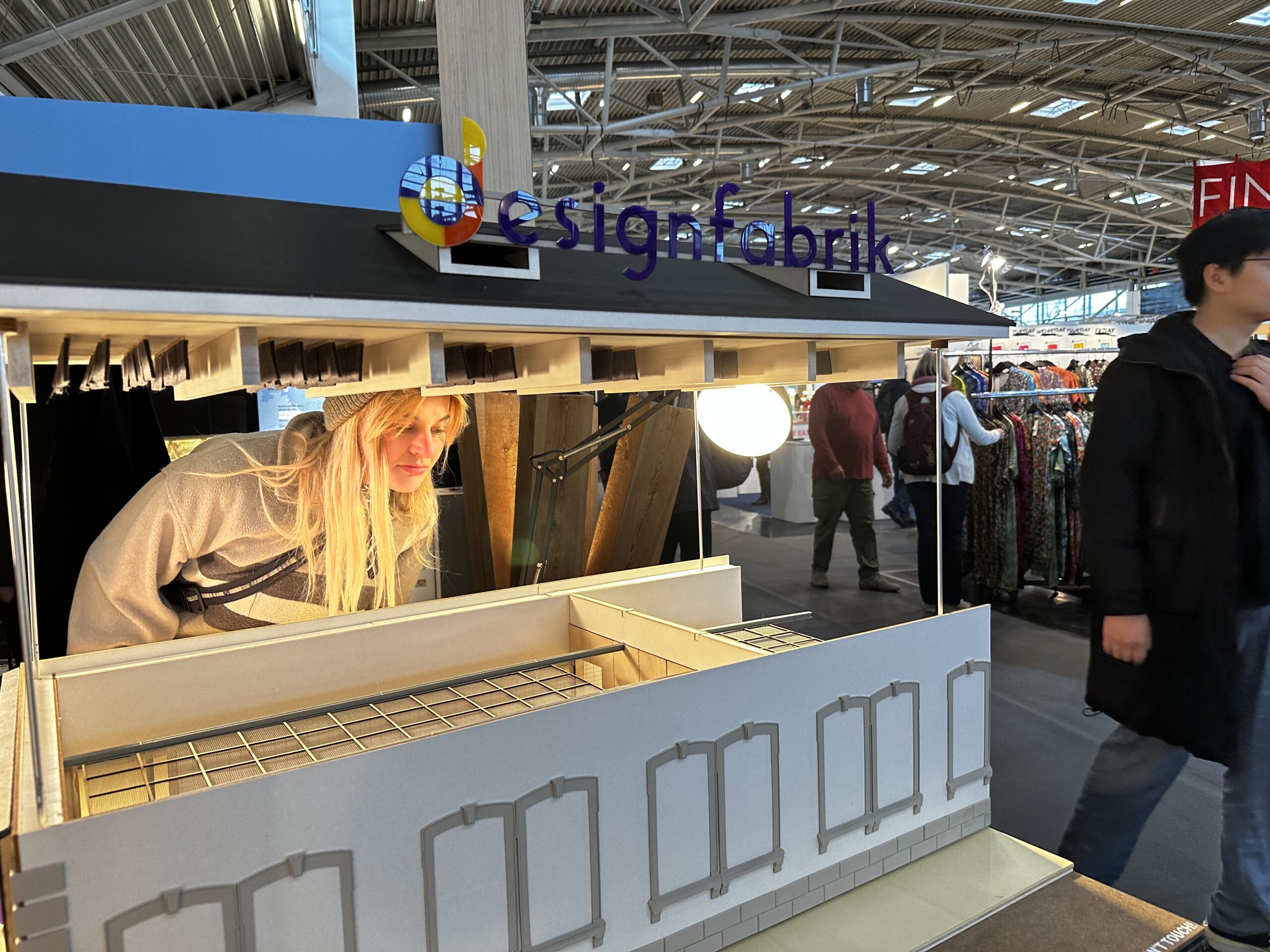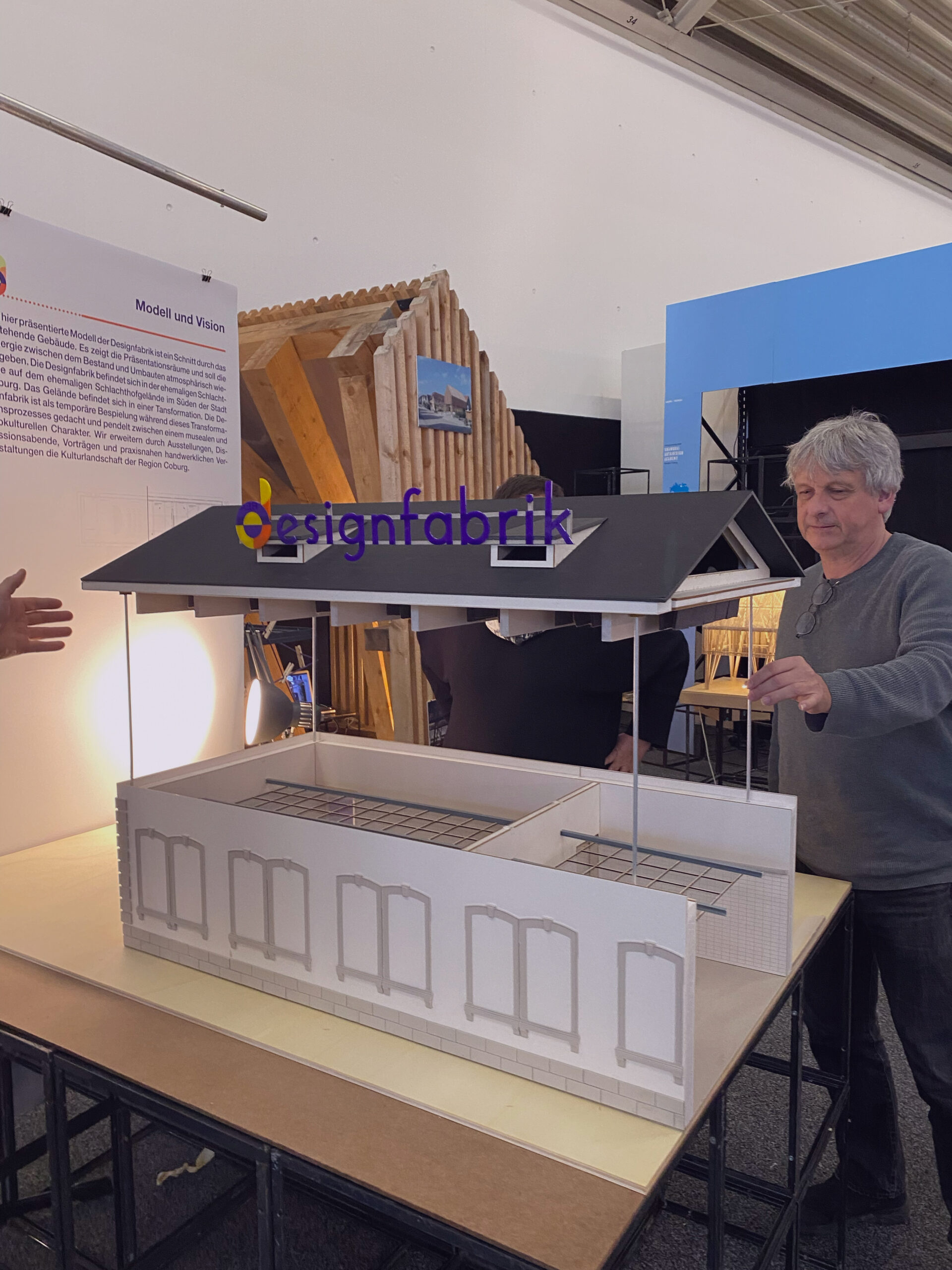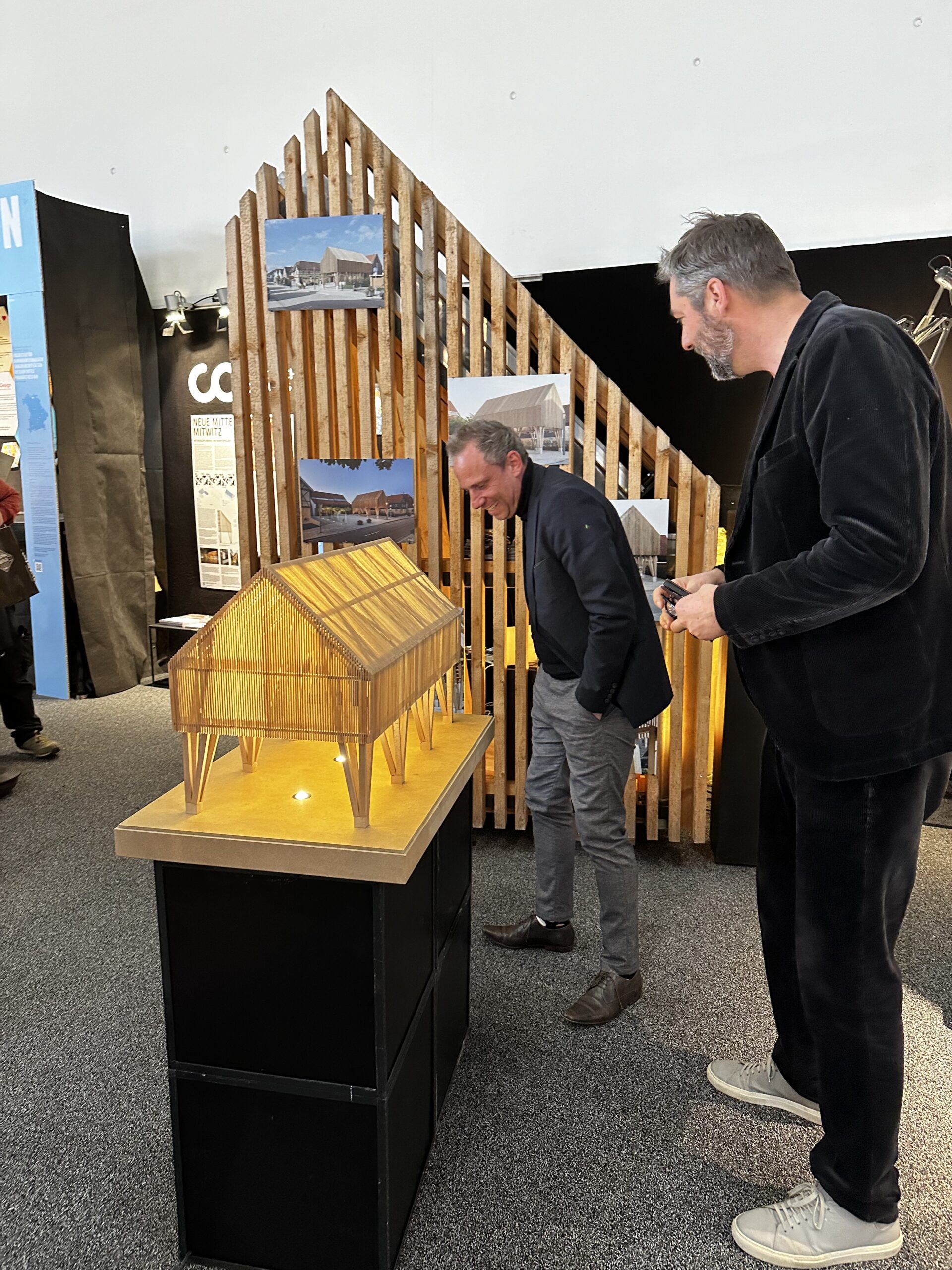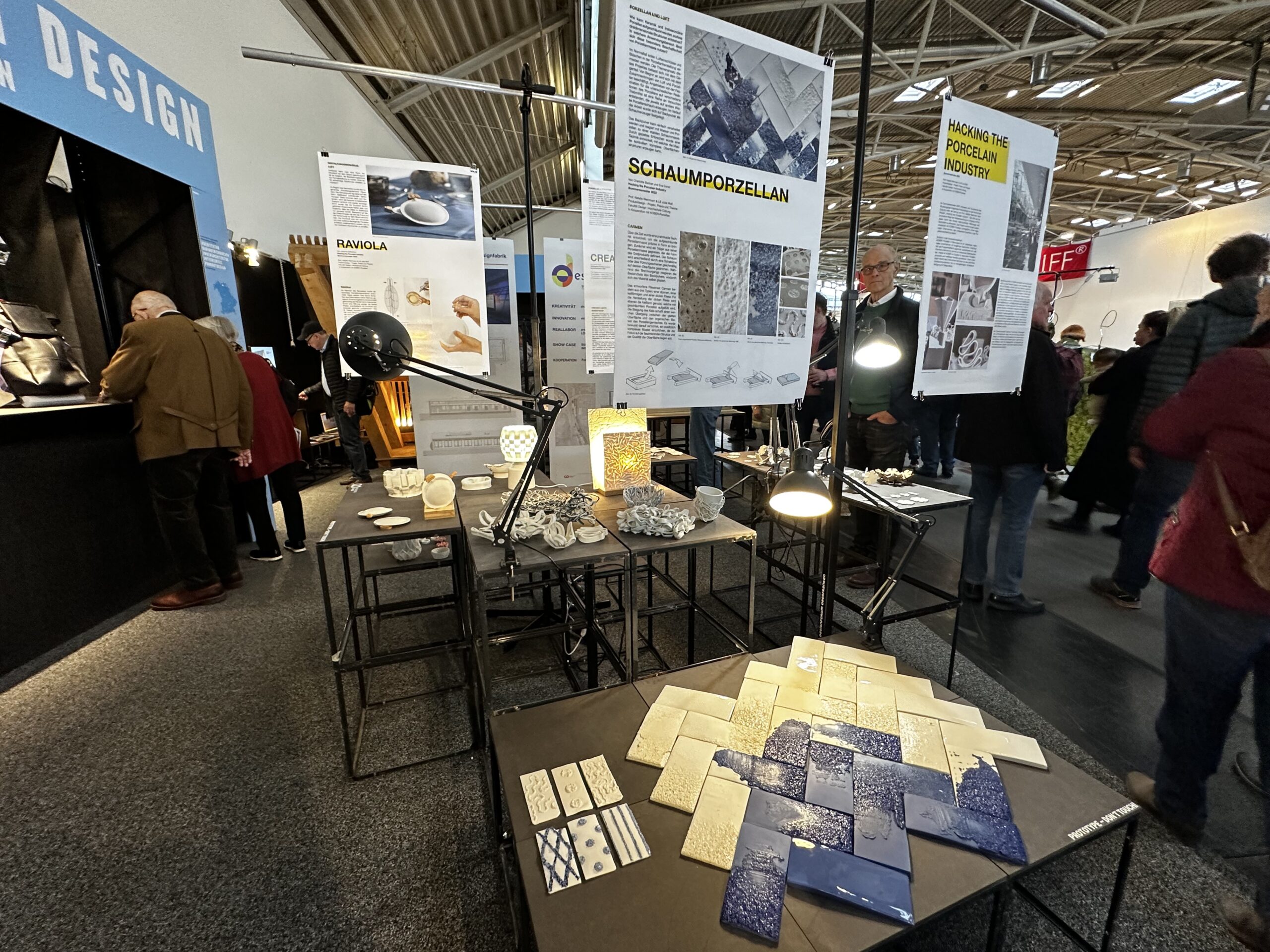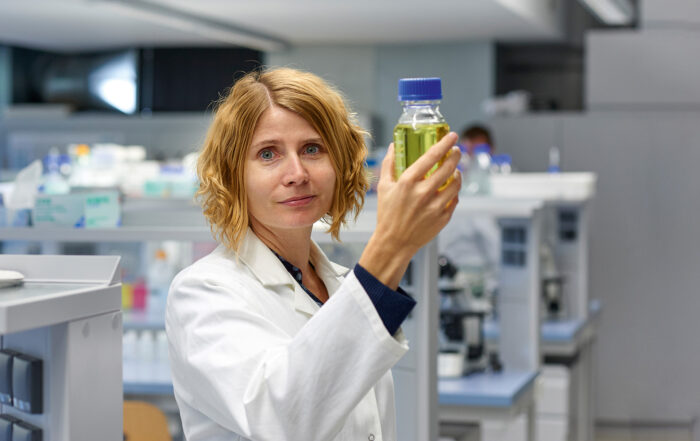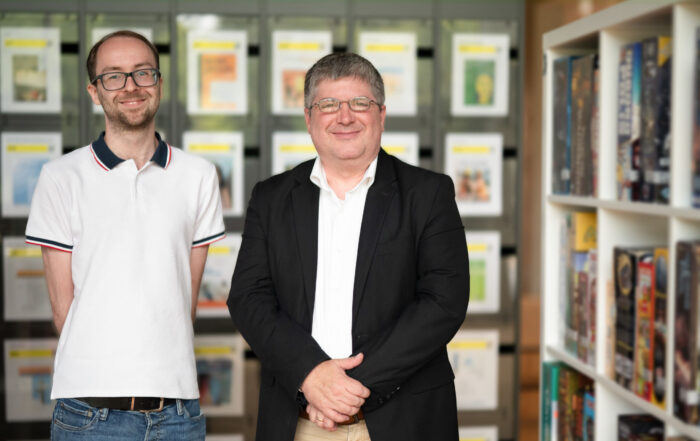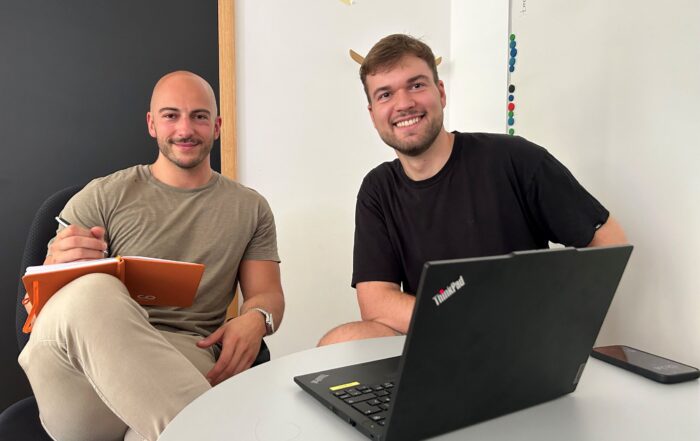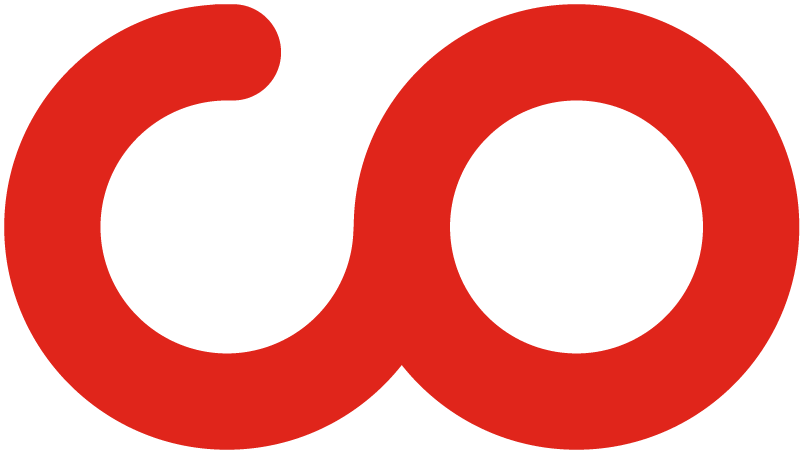4. March '24
The Faculty of Design at Coburg University of Applied Sciences presents transfer projects at the International Crafts Fair in Munich as part of “Wege zum Design – Ausbildung in Bayern”.
This exhibition is organized annually by the Coburg Designforum Oberfranken e.V. The exhibition stand is a hive of activity.
The “Neue Mitte Mitwitz” project is attracting attention.
In the market town in the district of Kronach, a wooden pavilion has been erected as a new village center, which visitors can experience at the trade fair in Munich.
They arrive in a 1:1 built corner of the pavilion on the village square in Mitwitz.
A video shows the implementation of the interdisciplinary design project of the architecture and civil engineering courses – the topping-out ceremony was celebrated in May 2023.
The official opening will follow this year.
Using the “Designfabrik Coburg” model, Dean Prof. Dr. Holger Falter explains the term “design factory”.
This stands for a place where students at Coburg University of Applied Sciences, especially those studying on the Design Campus, can learn how to plan, implement and present projects.
The Design Factory is a space for design transfer, made possible by the Creapolis+design project, funded by the federal-state initiative “Innovative University”.
These projects need a space full of possibilities, for example on the site of the former abattoir, which is just waiting to be used for this purpose.
The Designfabrik model is a cut through the former slaughterhouse.
It atmospherically reflects the synergy between the existing building and the temporary conversions.
The concept envisages space for practical experiments (so-called real laboratories), exhibitions and events in the historic slaughterhouse.
The first interventions are to be implemented from early summer 2024. Foaming, 3D printing and blowing up: How students work with porcelain “What’s foam porcelain?” marvels a visitor to the International Crafts Fair.
As part of the “Hacking the Porcelain Industry” project in the Integrated Product Design course, students experimented with various manufacturing processes, such as foaming, 3D printing and blowing up porcelain.
These innovative approaches make it possible to discover new design potential and use the traditional material porcelain in unconventional ways, including as wafer-thin lampshades or plug-in modules.
The collaboration between Coburg University of Applied Sciences, industry partner KOBER-Porzellan and the students shows how forward-looking innovations can be created through dialog between design and industry. Background information Creapolis+design Seven years ago, the federal and state governments jointly launched an initiative to support universities in bringing their ideas, knowledge and technologies to their region.
Coburg University of Applied Sciences was one of the winners of the “Innovative University” competition.
From 2018 to the end of 2022, it will receive a total of 6.5 million euros in funding from the program to expand its diverse innovation and transfer activities.
The innovation and networking platform CREAPOLIS was created on the derelict site of the former Coburg abattoir.
In the second funding period, a total of 9.1 million euros will be provided for the follow-up project “CREAPOLIS+design”, of which 7.6 million euros will go to the university. It submitted the application with partners from the region: the Lucas-Cranach-Campus-Stiftung Kronach, the Förderverein des Forschungs- und Anwendungszentrums für digitale Zukunftstechnologien FADZ Lichtenfels and the Coburger Designforum Oberfranken.
“Creapolis+Design” has placed the topic of design at the center of the project’s transfer activities since 2023.
This will manifest itself in the transformation of the industrial wasteland at the Coburg abattoir and freight yard site into a “hands-on campus”.
The design factory is part of the Creapolis+design project, funded by the federal-state initiative “Innovative University”.
The former slaughterhouse will become a design factory as a temporary venue during the transformation of the slaughterhouse site.
With exhibitions, discussion evenings, lectures and practical craft events, the university is opening up and expanding the cultural landscape of the Coburg region.


